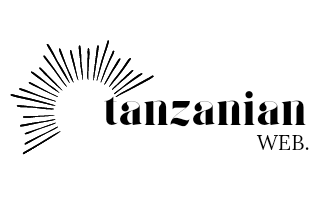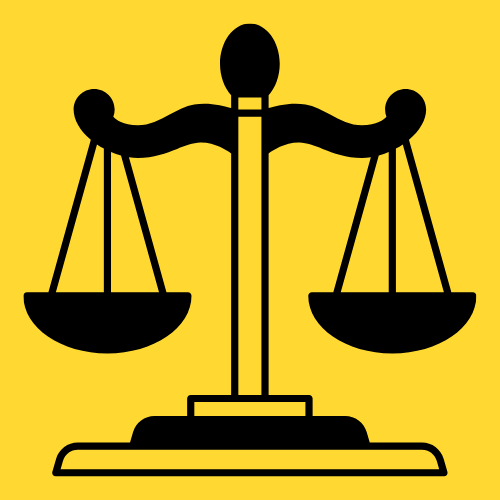“200”, Aptitude Test
Questions and Answers for Mooring Hand II – Tanzania Ports Authority (TPA).
This set of 200 multiple choice questions
prepares candidates for the Mooring Hand II aptitude test in Tanzania by
covering key areas such as vessel mooring, safety, lookout duties, buoy
maintenance, and hydrographic survey support. It aligns with job requirements
and simulates real test conditions to enhance readiness and confidence.
Prepared by:
Mooring Hand and Compiled by
A lawyer stationed in Dar-es-salaam.
0628729934.
Date: June 10, 2025
Dear applicants,
This collection of questions and answers
has been carefully prepared to help all of you to understand the key areas
tested during the interview. The goal is to provide a useful, and practical
study guide so you can all perform confidently and fairly in the selection
process. I wish you the best of luck, and may this resource support you in
achieving success!
Warm regards,
Johnson Yesaya Mgelwa
For Personal Use by Applicants Preparing
for Mooring Hand II interview at Tanzania Ports Authority (TPA).
ALL
QUESTIONS ARE COMPILED TOGETHER.
1. What is the primary purpose
of mooring a vessel?
A. To allow cargo loading B. To secure the vessel in place C. To start the
engine D. To measure water depth
Answer: B
2. Which equipment is commonly
used to moor a vessel?
A. Hook B. Buoy C. Mooring rope D. Anchor light
Answer: C
3. What does “berthing” mean
in maritime operations?
A. Anchoring in open sea B. Attaching vessel to dock C. Sailing offshore D.
Launching a lifeboat
Answer: B
4. What should be worn during
mooring operations for safety?
A. Uniform only B. Overalls and sandals C. Safety gear and helmet D. Raincoat
Answer: C
5. Which of the following is a
responsibility of a Mooring Hand?
A. Engine repair B. Mooring boats cleaning C. Weather reporting D. Writing
cargo manifest
Answer: B
6. What is a buoy used for?
A. Measuring air pressure B. Lifting cargo C. Marking water positions D. Speed
monitoring
Answer: C
7. Which certificate is
mandatory for a Mooring Hand II position?
A. Firearms license B. Driving license C. Basic Safety Certificate D. First Aid
Diploma
Answer: C
8. When does “unberthing”
occur?
A. While docking B. During repairs C. When a ship leaves berth D. At high tide
Answer: C
9. What is lookout duty in
marine operations?
A. Loading goods B. Monitoring weather C. Observing surroundings for safety D.
Communicating on radio
Answer: C
10. Why is cleanliness
important on mooring boats?
A. To reduce speed B. To increase noise C. For safety and hygiene D. To attract
fish
Answer: C
11. What is the primary danger
during mooring operations?
A. Loud noise B. Tripping over ropes C. Sunlight D. Cold water
Answer: B
12. Mooring lines should be:
A. Thin and fragile B. Old and worn C. Strong and maintained D. Painted bright
red
Answer: C
13. Who assigns duties to
Mooring Hand II?
A. Captain B. Supervisor C. Watchman D. Engineer
Answer: B
14. Hydrographic surveys
assist in:
A. Fishing B. Road construction C. Mapping water areas D. Legal inspections
Answer: C
15. A mooring rope should be
stored:
A. In water B. In direct sunlight C. Coiled and dry D. In the engine room
Answer: C
16. Which of the following is
part of personal protective equipment (PPE)?
A. Sunglasses B. Gloves C. T-shirt D. Sweater
Answer: B
17. Which of these is not part
of a vessel's mooring system?
A. Bollard B. Mooring line C. Compass D. Winch
Answer: C
18. During lookout watch, the
Mooring Hand should:
A. Sleep occasionally B. Use binoculars if needed C. Focus only on water birds D.
Ignore weather
Answer: B
19. A safe deck during
operations should be:
A. Slippery B. Dry and clean C. Wet with oil D. Full of loose ropes
Answer: B
20. The role of a mooring
chain in buoys is to:
A. Signal traffic B. Keep the buoy in place C. Make noise D. Assist in
anchoring crew
Answer: B
21. What does a hydrographic
survey mainly collect?
A. Wind speed data B. Population numbers C. Water depth and seabed data D. Ship
logs
Answer: C
22. A vessel is most stable
when:
A. Unbalanced B. Evenly loaded and moored C. Drifting D. In dry dock
Answer: B
23. Basic Safety Training
includes all except:
A. Firefighting B. Personal survival C. Rope making D. First aid
Answer: C
24. When working on deck,
footwear must be:
A. Leather shoes B. Slippers C. Steel-toe boots D. Rubber sandals
Answer: C
25. A mooring boat is
different from a lifeboat because it:
A. Is larger B. Assists in mooring operations C. Has sails D. Carries more
people
Answer: B
26. Who is responsible for
mooring operations on board?
A. Carpenter B. Cook C. Deck crew D. Engineer
Answer: C
27. Regular maintenance of
mooring boats ensures:
A. They remain dirty B. Long operational life C. They are unused D. Lower crew
morale
Answer: B
28. During unberthing, a
Mooring Hand should be:
A. Relaxing B. Alert and responsive C. Below deck D. Off duty
Answer: B
29. What should be done before
handling ropes?
A. Wet the ropes B. Check for damage C. Step on them D. Tie them quickly
Answer: B
30. The term “CSEE” in
qualifications refers to:
A. College Studies of Engineering and Economics B. Certificate of Secondary
Education Examination C. Civil Society Educational Exam D. Central School
Examination of East
Answer: B
31. A lookout watch helps
prevent:
A. Sea breeze B. Collisions C. Engine noise D. Salt accumulation
Answer: B
32. What is the best tool to
clean a mooring boat deck?
A. Hammer B. Mop and brush C. Saw D. Paint roller
Answer: B
33. Which of the following
reduces rope strength?
A. Proper storage B. Overloading and knots C. Shade D. Short length
Answer: B
34. What should you do if you
observe a hazard during mooring?
A. Ignore it B. Report immediately C. Wait until off duty D. Complain later
Answer: B
35. Mooring boats are used:
A. In dry dock only B. During cargo handling C. To assist vessels to dock or
undock D. To rescue fishermen
Answer: C
36. Which of these is part of
fire safety training?
A. Life raft boarding B. Signal flag use C. Fire extinguisher handling D.
Laundry cleaning
Answer: C
37. When a ship approaches
berth, the mooring team should be:
A. Sleeping B. Ready at position C. Listening to music D. Having lunch
Answer: B
38. Life jackets should be
worn:
A. When cleaning toilets B. During training only C. Whenever required at sea D.
In sleeping quarters
Answer: C
39. Buoy maintenance includes:
A. Painting cars B. Checking mooring chains C. Sealing cargo D. Testing engines
Answer: B
40. When carrying equipment,
you should:
A. Drag it B. Lift correctly C. Toss it around D. Use your back only
Answer: B
41. The supervisor assigns
tasks to ensure:
A. Delay B. Uniformity and safety C. Confusion D. Short working hours
Answer: B
42. During stormy conditions,
a lookout should:
A. Go inside B. Keep clear watch C. Relax and wait D. Play games
Answer: B
43. Mooring lines are checked
regularly for:
A. Dust B. Length only C. Wear and damage D. Color change
Answer: C
44. Mooring operations
require:
A. Sleepy crew B. Quick and careless actions C. Alertness and coordination D. Single-person
work
Answer: C
45. Which of these is used to
secure a vessel?
A. Bucket B. Mooring winch C. Flashlight D. Knife
Answer: B
46. Buoys are useful for:
A. Floating bridges B. Holding ships permanently C. Navigation marking D. Sand
storage
Answer: C
47. When mooring chains are
rusty, you should:
A. Paint over B. Ignore it C. Report and replace D. Clean with hands
Answer: C
48. Mooring duties are mostly
performed at:
A. Engine room B. Cabin C. Deck and dockside D. Galley
Answer: C
49. If a mooring line snaps
under tension, it can:
A. Cause injury B. Float harmlessly C. Melt D. Play music
Answer: A
50. How should ropes be
carried?
A. Wrapped around the neck B. With care and good posture C. In pockets D.
Kicked along the floor
📘 Get the Full Aptitude Test PDF (Questions 51–200)
You’ve just accessed the first 50 questions. The full set of 200 expertly prepared aptitude test questions for the Mooring Hand II position is available for download in a PDF format
To receive the full PDF (Questions 51–200), please make a payment of Tsh 10,000 to the LIPA number below:
After payment, please send a text message with the words “Mooring Hand II” to:
⚠️ Important Notice
- The PDF is watermarked and protected for personal use only.
- Redistribution, sharing, screenshotting, or copying the contents is strictly prohibited.
- Legal action may be taken against the misuse of this material.
Thank you for supporting quality content. Best of luck in your interview preparation!


%20(10).png)





0 Comments
PLACE YOUR COMMENT HERE
WARNING: DO NOT USE ABUSIVE LANGUAGE BECAUSE IT IS AGAINST THE LAW.
THE COMMENTS OF OUR READERS IS NOT OUR RESPONSIBILITY.